By Guo Heng Chin
As I mentioned in last week’s article, I was in Tokyo for a week. Seeing that the holiday season is just around the corner, let me regale you with some holiday tales of my little pilgrimage to the Magic stores in Tokyo and the wonders I saw and experienced throughout my journey. Readers interested in actionable finance-related stuff can skip straight to the Trends segment at the bottom of this article for the card I am examining this week with my financial monocles.
While my trip was not Magic-related (that one comes next May for Grand Prix Chiba featuring Modern Masters Two, I mean 2015), I tried to squeeze in as much time as my girlfriend would allow to drop by Tokyo’s Magic stores. In a way, Japan is the hallowed land of Magic: the Gathering in Asia. It is the Asian country with the largest number of Grand Prix allocation each year. For comparison, there will be five Grand Prix in Japan in 2015 while China and Southeast Asia only got three each. Japanese players are among some of the most accomplished Asian players in the pro circuit, a testament to the thriving Magic scene in Japan. However the part about Japanese Magic stores that excited me the most was the fact that they are home to Japanese foils and various other peculiarities unique to Japan.
The Rarest of Them All
The first place I went to search for magic stores was Akihabara, the epicenter of geekery in Tokyo. Akihabara is home to not just one, nor two, but a cluster of Magic stores, with at least four of them being major purveyor of singles. The first store I dropped by was Big Magic located on the top floor of Radio Kaikan, a shopping mall dedicated to anime and manga, figurines, collectibles and TCGs . As Big Magic’s name implied, the store showcased a big inventory of big money singles.

It felt surreal to be in the vicinity of so many singles worth more than my monthly salary just sitting behind the glass display, like museum exhibits. I have played in a plethora of Magic stores in Malaysia and England, but I have never encountered such brazen display of Powers and high end cards within a two meter radius. I grind competitive Magic and write about Magic finance, but I am also a collector at heart. I have a fascination with the rare and unique, a trait I imagine I share with most collectors, be they collectors of cardboards, stamps, or bottle caps. And nothing excites a collector like witnessing with his or her own eyes an object so rare it possessed a near-mythical status:
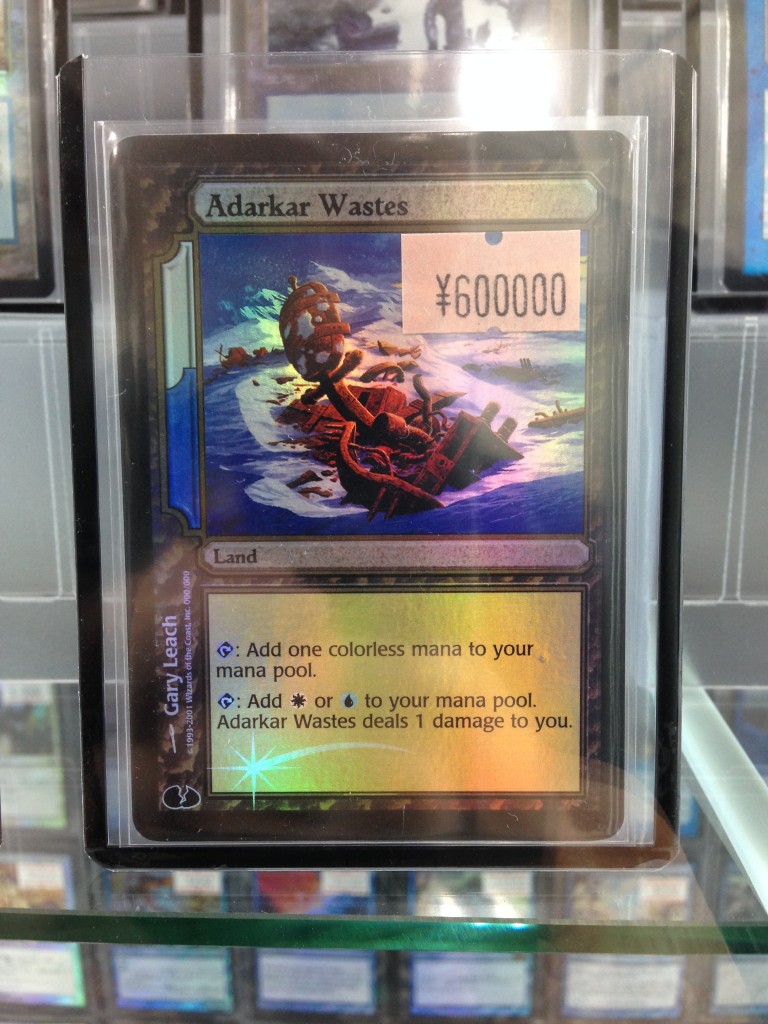
The Adarkar Wastes above was one of the test print cards done in a different frame. Though the card has an Unglued symbol, it was part of the test print for 8th Edition that leaked out. There is only one copy of the card above as only four of each card were printed, with two of them featuring different styles of foiling. The copy above should be the dark hue-with-foiling-all-over-the-card version.
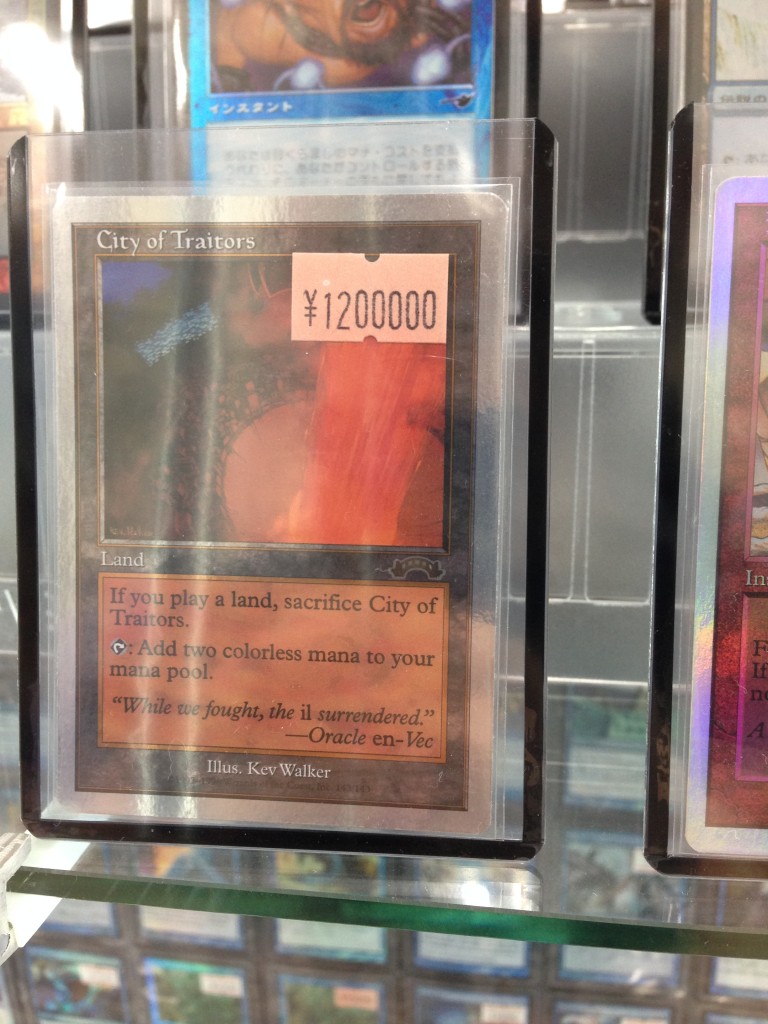
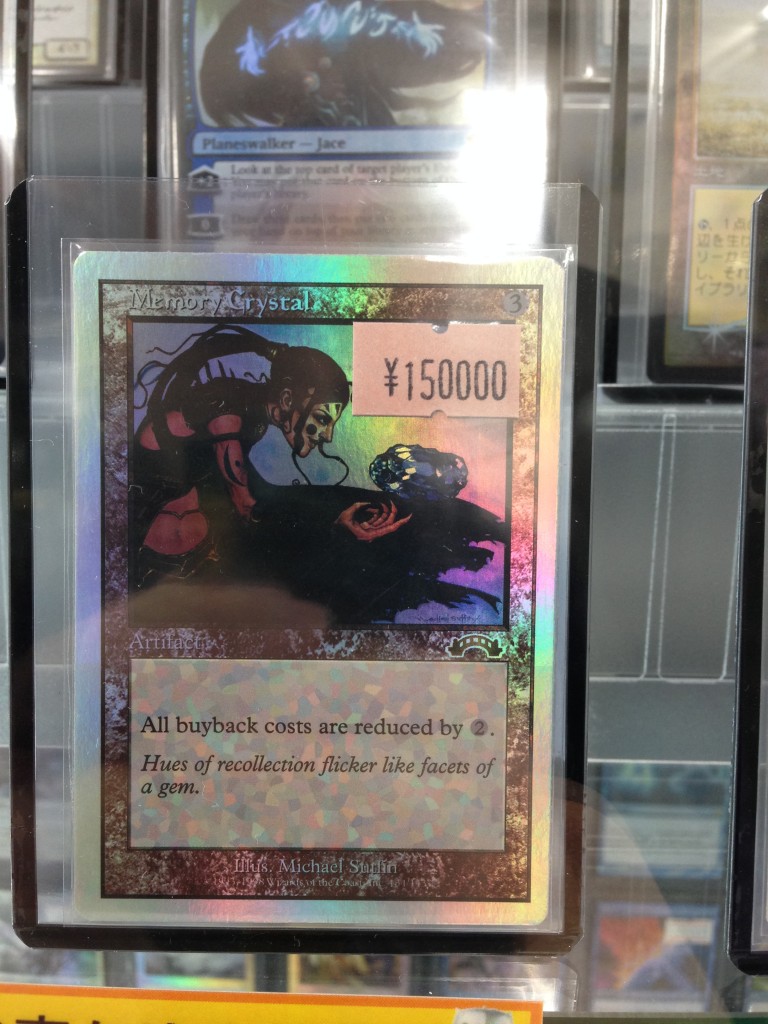
Wow. Just wow. I recall reading an old piece about high end foils by no other than the godfather of Magic finance, Jonathan Medina. The article concluded with a segment aptly titled ‘Foils You’ll Never See’ where Medina wrote about certain foils where ” chances are that you won’t run into these, but you should be aware that cards like this exist”. They are so rare that most of the time you can only see them at Magic Librarities, a website dedicated to archiving all the rarities that exist throughout the two decades of Magic’s existence, and one of my favorite procrastination site (I have some boring task at hand, oh wait lets have a look at all these rarities). There was a sense of awe in seeing those cards in real life, akin to witnessing in person an old painting in which you have only saw low resolution pictures of in a textbook or Wikipedia.
I also had the chance to see one of these beauties physically. I have always wondered how would a shiny bronze symbol would look like on a card:
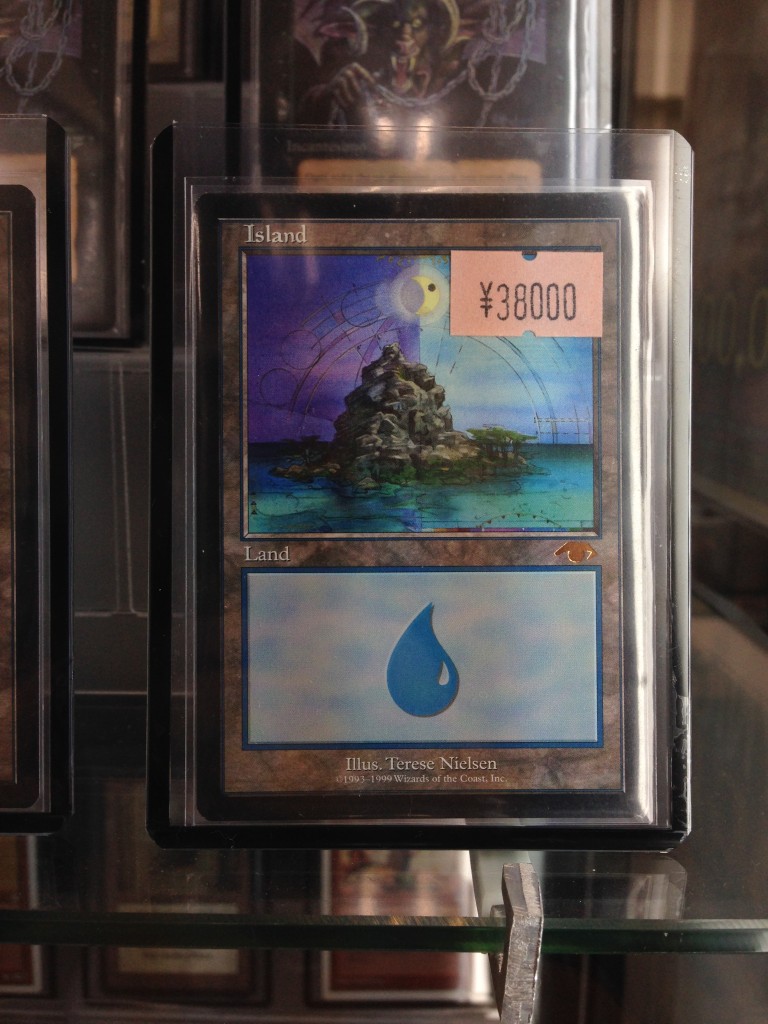
Cream of high-end rarities aside, the other cool thing about Big Magic in Akihabara is their order-taking system where you can browse and select the singles you want on a tablet and pick them up on their counter. I read that Hareruya, Tomoharu Saito’s megastore also employs a similar system using desktops.
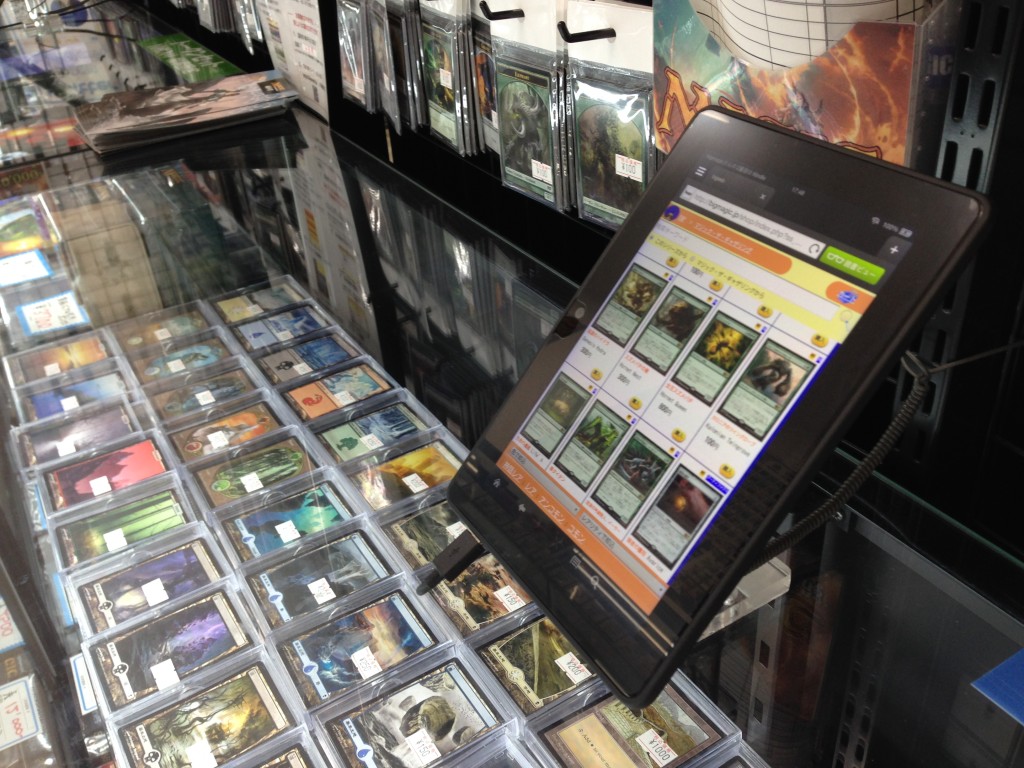
Speaking of machines, I stumbled upon one of these in front of another Magic store a few floors below Big Magic:
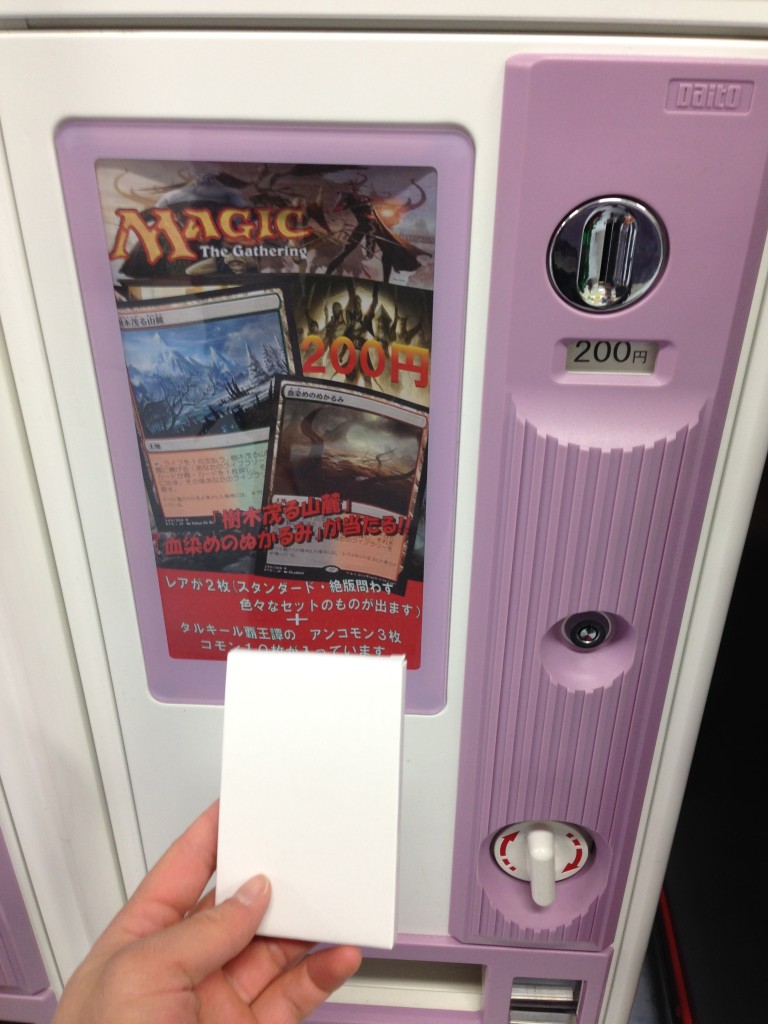
The Taste of Brainstorm
I visited nearly all the stores in the two clusters of Magic stores in Tokyo, Akihabara and Ikebukuro. There are plenty of articles and forum posts written about how the stores are like, so rather than repeat what others wrote (go read them, they deserve the hits), I am going to share the things that fascinated me during my visit to those stores. Witnessing rarities in person was one of them, and the other was finding out how Brainstorm tastes.
I made the trip to Shibuya, partially to accompany my girlfriend for her shopping, and partially to check out Mint, the magic store sponsoring Yuuya Watanabe (I am sure most of you who watched the World Championship semifinals caught a glimpse of Mint’s logo on Yuuya’s sweater). Opened in February 2012, Mint is a relatively new store compared with the incumbents in Akihabara and Ikebukoro but it boasts a unique edge: it is both a bar and a card store.
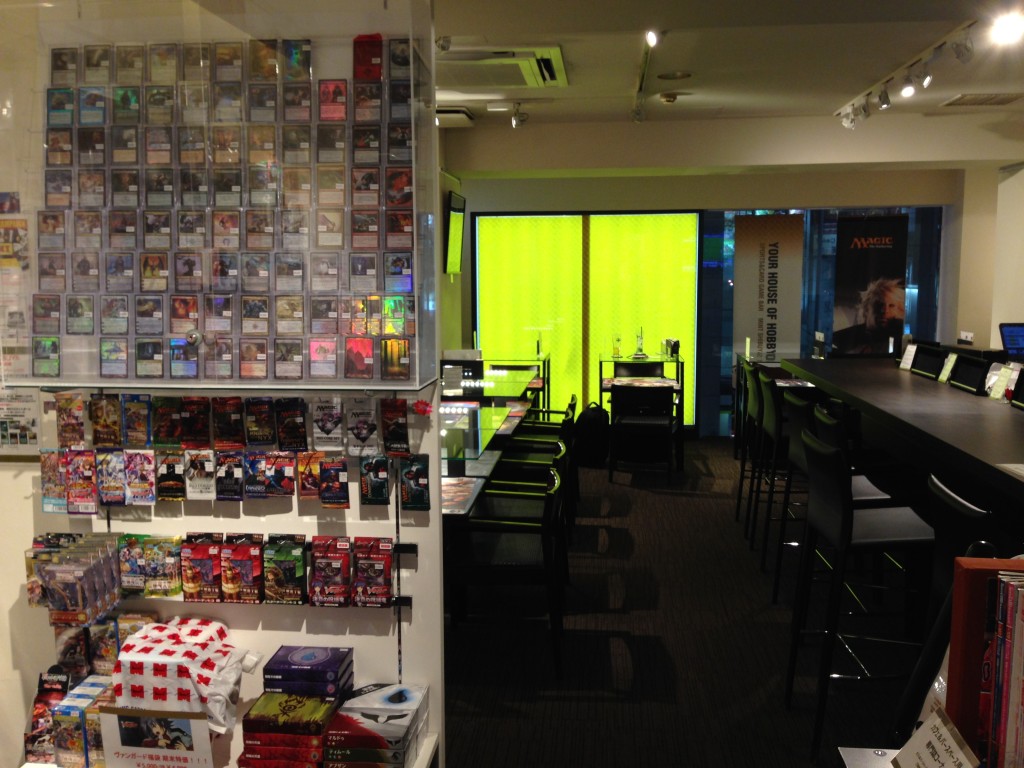
Mint Shibuya definitely leveraged the fact that they are a both a bar and a Magic store by concocting their own cocktails inspired by and named after iconic Magic cards with like Brainstorm and Voice of Resurgence. I relished the opportunity to finally experience a Brainstorm with my taste buds. I am no expert on cocktails, but the Brainstorm cocktail was sweet and zesty, just like casting the spell itself (or maybe I am just biased, being a lifelong blue mage).
Wait a minute. Aren’t you asking for trouble putting a drink right beside your deck?
Mint Shibuya came up with a great answer: two-tiered tables with a transparent glass upper tier to put your drink and a spacious bottom tier for you to sling cards.
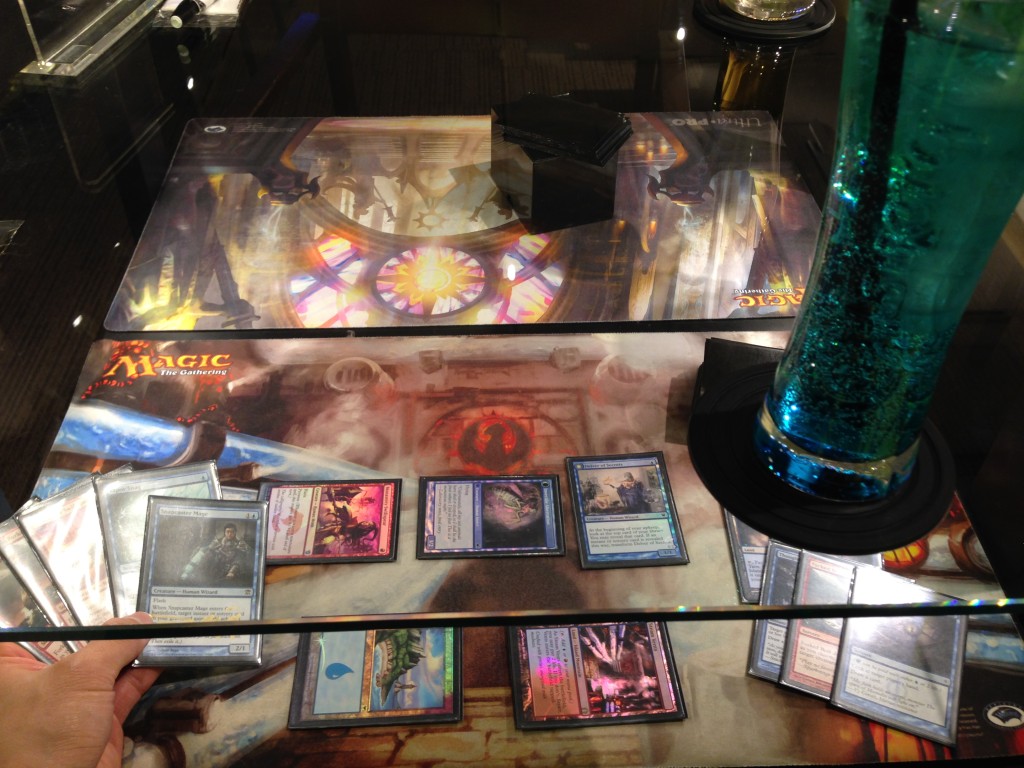
There were no one playing in the shop as I visited it on an weekday afternoon, but I could not resist the urge to test out such an ingenious solution. I can now claim from experience that it was pretty comfortable to use!
Tokyo Hauls
Being the guy who writes about undervalued cards, I can not help but search for undervalued Magic in Tokyo. The first haul from my trip was Japanese Khans of Tarkir booster boxes.
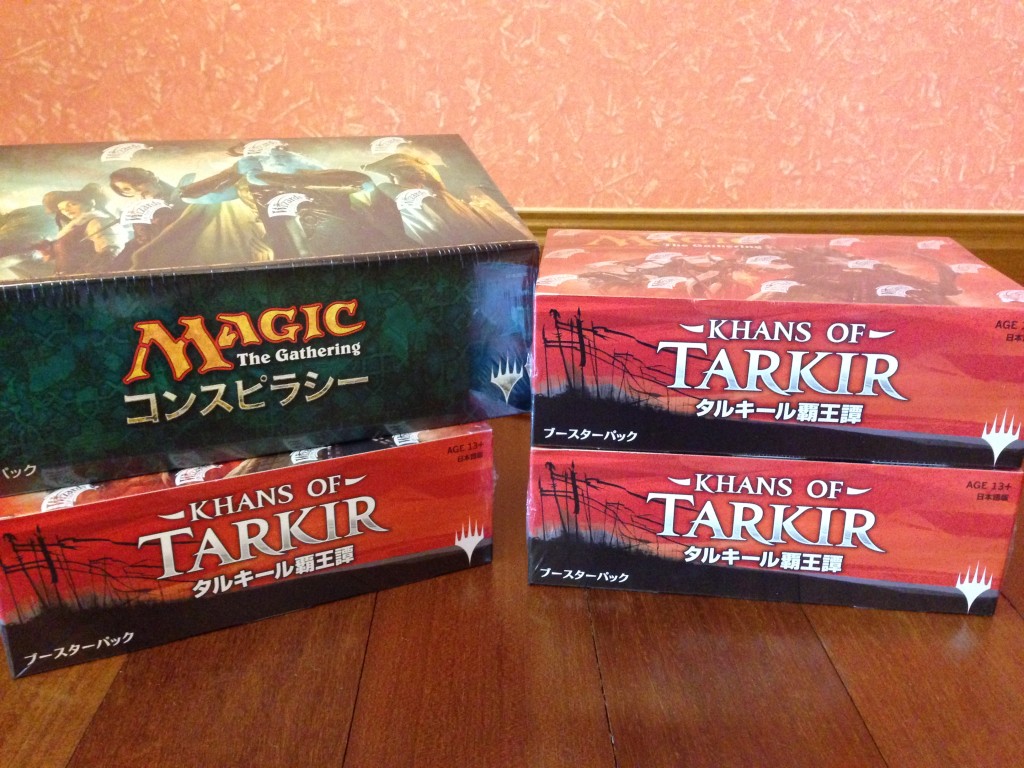
It comes without saying that Japanese booster boxes are going to be cheaper in Japan. I bought my three Khans of Tarkir boxes from different shops, and they all averaged out at ¥10, 500, about $87 each. Throughout December 2014, Japanese Khans of Tarkir booster boxes sold on eBay for $130 – $160, with a single outlier of $119 and some fetching up to $175. Japanese Conspiracy boxes sold for around $140 each during the same time frame.
The Japanese stores are well aware that their eternal staple foils command an insane multiplier compared to English foils and price them accordingly. The foil Japanese Khans of Tarkir fetchlands were on par with eBay completed sales prices. But nowhere else could you find Japanese booster boxes for the price it was sold at inside Japan. I opted to buy booster boxes rather than Japanese foils as I figured that would give me the best value with my limited funds.
Intriguingly, shops in Tokyo sell English Khans of Tarkir booster boxes at a higher price than Japanese boosters. English Khans of Tarkir were going for ¥13, 000, around $1, 500 more expensive than the Japanese ones. The shopkeepers I spoke to, with the assistance of Google’s Translate app, cited the fact that in Japan, English boxes come in a significantly lower supply than Japanese boxes. No surprise there. While they agree that Japanese cards reins in a higher price due to the cards’ cool typeface, their opinions differ on how much Japanese players value English cards. One claimed that Japanese players generally prefer Japanese cards, a statement I can agree with. The other mentioned how some Japanese players seek out English cards to play in tournaments abroad, something I find peculiar as it is technically legal to play Japanese cards anywhere English cards could be played.
Nevertheless, it remains the fact that English booster boxes were sold at a higher price than Japanese booster boxes in the stores I visited. It makes little sense economically to sell a product at a higher price when it has low demand, even though the product’s supply is lower. I guess I will find out more about the value Japanese players place on English cards when I have the chance to do some trading at Grand Prix Chiba come May next year.
Unfortunately, player-to-player trading is not allowed in most Tokyo stores. While I sympathise with their reason for implementing the rule, it nevertheless disappointed me as I lugged along my trade binder for the trip with high hopes of trading for Japanese foils. I guess I should have dug deeper while researching my trip.
The other Japanese MTG object you could get much cheaper in Japan than anywhere else are these:
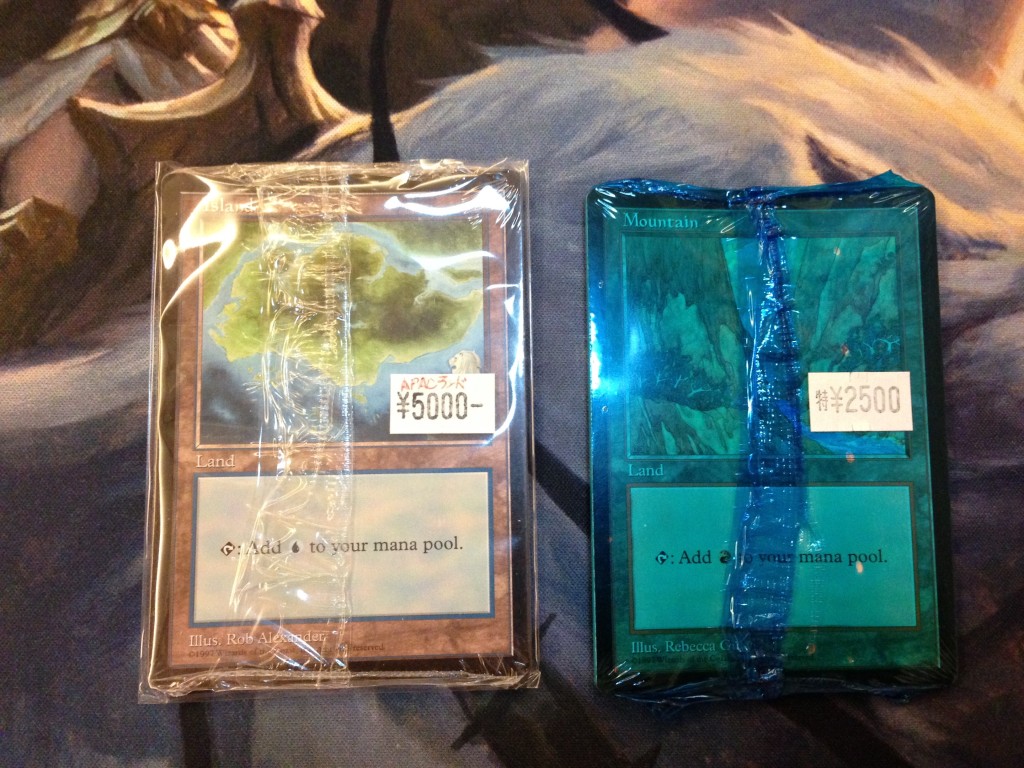
APAC (Asia-Pacific) lands is a series of fifteen basic lands given out to Asia-Pacific players as promotional cards back in 1998. The APAC lands are unique in a sense that their art each refer to a specific real world setting in Asia-Pacific. They came in three sets distinguished by their color-coded packaging – clear, red and blue and each pack contained different arts for each basic land type. APAC lands are highly sought after for their gorgeous and unconventional art (land art do not usually refer to real world locations) and their rarity.

The cheapest APAC lands go for $6 – $7 apiece while the most expensive ones go up to $25. Unopened packs go for anywhere between $25 – $60 on eBay and online retailers sell them for least $45 for the clear pack and up to $70 for the red pack, and that is if they stock them. My only regret was not getting more unopened APAC lands during my trip.
I hope my tale amused you a little, and if you ever go to Japan, you know what to spend your money on. APAC lands and lots of ramen.
Trends
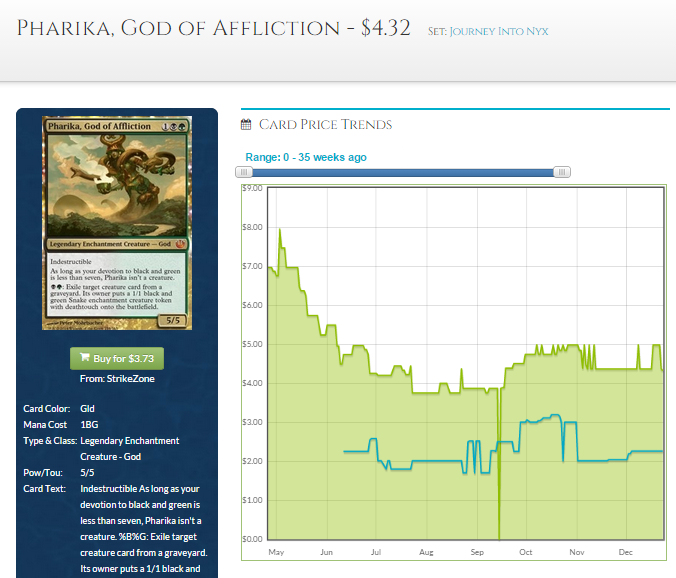
A good indicator of an undervalued card about to spike is a spike on Magic Online. As of writing, Pharika, God of Affliction is demanding 12 tix online, while paper copies are only $4.32. Pharika has been seeing play as a two-of in the mainboard of Sultai Reanimator, Abzan Reanimator, GB Constellation and the occasional Abzan Midrange. Pharika is the ultimate value engine, churning out a stream of deathtouch blockers from your fallen or milled creatures, with the potential to become a 5/5 body. As her snakes are enchantment creatures, Pharika combos with Doomwake Giant to give you an asymmetrical Drown in Sorrow each turn.
Pharika was one of the cards I thought would be one of the breakout card in Journey into Nyx but it has never even went as high as $10. Pharika is a mythic rare from a little-opened spring set, is competitively costed in a popular competitive color combination and is a card that generates value turn-by-turn and is hard to get rid of. I would consider her on par with Keranos, God of Storms who was nearly $20 at his height and is now $13. I do not expect Pharika to emulate Keranos pricewise as Keranos sees play as a one-of in Modern and Legacy decks as a way to grind out long games, but Pharika at under $5 seemed to be way undervalued.
Track your collection's value over time, see which cards moved the most, track wishlists, tradelists and more. Sign up at MTGPrice.com - it's free!
